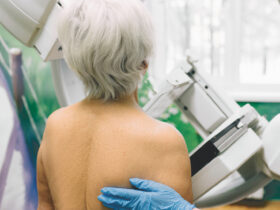By Ravnik Singh, DPM, AACFAS
As a podiatrist, I’ve seen countless patients walk through my clinic door, each with a unique story etched into their gait. A common thread that often runs through these narratives is the dull, persistent ache of arthritis in the foot. It’s a condition that can transform the simple act of walking into a painful ordeal, limiting daily activities and diminishing one’s quality of life. But I’m here to tell you that while arthritis may be a chronic condition, a life of pain and limited mobility is not a foregone conclusion. With a tailored, multi-faceted approach, we can manage the symptoms, slow the progression, and help you take a step forward toward a more comfortable future.
The foot is a marvel of engineering, a complex structure of 26 bones, 33 joints, and over 100 tendons, muscles, and ligaments. This intricate design, while perfect for weight-bearing and propulsion, also makes it a prime target for arthritic inflammation. Arthritis can affect any of the foot’s joints, but it most commonly strikes the big toe joint, the midfoot, and the ankle. The most frequent culprits are osteoarthritis, the “wear-and-
tear” type, and rheumatoid arthritis, an autoimmune condition. No matter the type, the result is the same: inflammation, joint damage, stiffness, and pain.
My approach to treating foot arthritis is not a one-size-fits-all solution. It begins with a thorough examination, a detailed discussion of your symptoms, and often, imaging such as X-rays or an MRI to assess the extent of the joint damage. This initial diagnostic phase is crucial for developing a personalized treatment plan that addresses your specific needs and lifestyle.
Non-Surgical Treatment Options
For many patients, conservative, non-surgical treatments are the first line of defense. A cornerstone of this approach is custom orthotics. These aren’t your drugstore insoles. Custom orthotics are devices meticulously crafted to support the unique architecture of your foot, redistributing pressure, cushioning the joints, and limiting motion where necessary. By providing proper support, orthotics can significantly reduce pain and improve function.
Similarly, I often recommend supportive footwear with a wide toe box, a rigid sole, and adequate arch support. Think of your shoes and orthotics as a team, working together to create a supportive environment for your aching joints.
Beyond orthotics and footwear, I also guide my patients on a range of other conservative strategies:
• Physical Therapy: This is a vital component, focusing on exercises that maintain joint flexibility, strengthen the surrounding muscles, and improve balance. These exercises can help prevent the joint from “freezing up” and can improve overall foot function.
• Topical Anti-Inflammatory Creams: For more mild pain, these creams can offer localized relief by reducing inflammation.
• Corticosteroid Injections: For more severe cases, I may consider injections directly into the affected joint. These can provide powerful, albeit temporary, relief from inflammation and pain, giving the patient a much-needed window of comfort.
It’s also important to address the role of lifestyle modifications. Maintaining a healthy weight is paramount, as every extra pound places additional stress on the joints of the feet. I work with my patients to set realistic goals and provide resources for weight management. Additionally, I discuss the importance of low-impact exercises like swimming or cycling, which allow for physical activity without the pounding impact of running or jumping.
When Surgery is Necessary
In cases where conservative treatments fail to provide adequate relief, surgical intervention may be the next step. Surgical options for foot arthritis range from joint fusions (arthrodesis) to joint replacement (arthroplasty).
• Joint Fusion (Arthrodesis): This procedure involves permanently joining the bones of a painful joint to eliminate motion and, therefore, pain. While this can lead to a loss of motion, it can be remarkably effective in eliminating chronic pain and restoring stability.
• Joint Replacement (Arthroplasty): This is a more complex procedure, typically reserved for specific joints like the ankle or the big toe (first metatarsophalangeal or MTP joint). In a joint replacement, the damaged, arthritic joint surfaces are removed and replaced with artificial or biological components. The goal of this surgery is to provide pain relief while preserving some degree of motion in the joint.
The decision to pursue surgery is a significant one, and I always ensure my patients are fully informed about the potential benefits, risks, and recovery process.
Living with foot arthritis is a journey, and as your podiatrist, I am your partner on that path. It’s about more than just treating a symptom; it’s about empowering you with the knowledge and tools to manage your condition effectively. By combining the right footwear, custom orthotics, targeted physical therapy, and when necessary, advanced medical procedures, we can work together to alleviate your pain and get you back on your feet. The road may have its challenges, but with the right guidance, you can take a step forward toward a life of greater comfort and mobility, one step at a time.
Disclaimer: This content is not intended to be a substitute for professional medical advice, diagnosis, or treatment. Always seek the advice of your physician or other qualified health care provider with any questions you may have regarding a medical condition.
Ravnik Singh, DPM, AACFAS
Ravnik Singh, DPM, AACFAS, is a Podiatrist at Family Foot & Leg Centers in Sarasota, FL. He is a Fellow of the American College of Foot & Ankle Surgeons. Call 239-430-3668 or visit www.NaplesPodiatrist.com to make an appointment. Visit FootHealthFacts.org to learn more about foot and ankle conditions.
FAMILY FOOT & LEG CENTER
3110 Fruitville Commons Blvd,
Suite 102
Sarasota, FL 34240
(Next to Cooper’s Hawk restaurant)
(239) 430 – 3668 (FOOT)
www.NaplesPodiatrist.com








